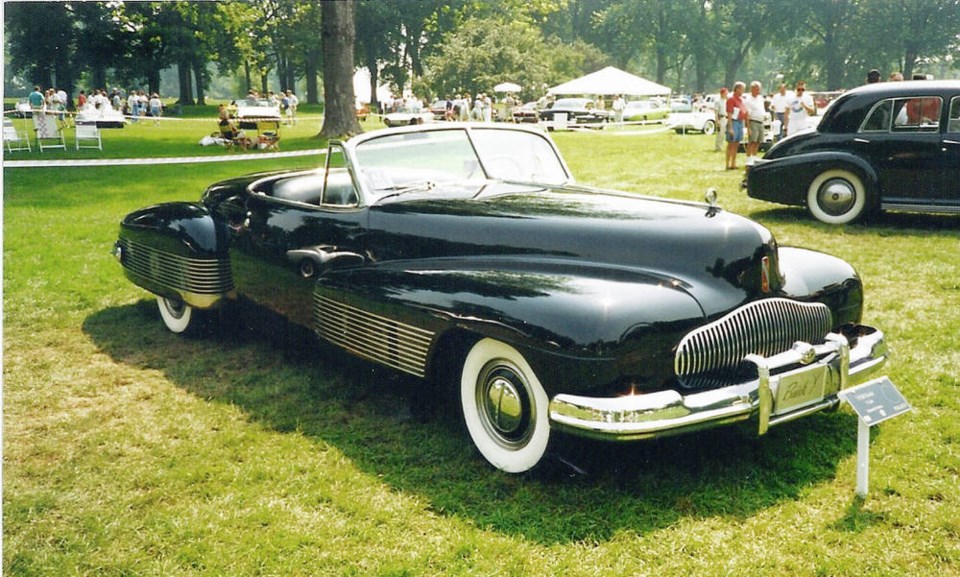The new LaSalle marque introduced by Cadillac was more than a ŌĆ£companion carŌĆØ for General MotorsŌĆÖ most prestigious nameplate; it is credited with formalizing automobile styling.
GMŌĆÖs premium Cadillac brand celebrated its silver anniversary in 1927 by introducing the LaSalle to provide Cadillac prestige and quality at a lower price, and also bridge the price gap between Cadillac and Buick.
Up to that time a carŌĆÖs appearance was generally created pragmatically by engineers dictated by mechanical requirements. GM president Alfred P. Sloan, Jr., had reflected on their carsŌĆÖ appearance and discussed improving it with his executives,
Shortly after during a California dealership tour CadillacŌĆÖs general manager Lawrence Fisher discovered a talented young man named Harley Earl at Cadillac distributor Don Lee. Earl was creating customized cars for movie stars and other wealthy patrons and it reminded Fisher of SloanŌĆÖs conversations.
Fisher was so impressed with EarlŌĆÖs creativity he convinced Sloan to hire him to style the new LaSalle. It would be the first formalized application of aesthetics to the automobileŌĆÖs appearance.
Earl was hired under contract to style the LaSalle and his imaginative use of colour, lines and contours was so successful that Sloan invited him to join the corporation to organize and manage a new Art and Colour Section. Reporting directly to Sloan, it would serve all GM divisions and complement perfectly SloanŌĆÖs evolving concept of the annual model change.
The former function of engineering was now established as a separate discipline called Art and Colour. It was renamed Styling in 1937 and would soon become critically important to the industry.
Automobile styling flourished at GM, and soon in the rest of the industry. But EarlŌĆÖs fertile and imaginative mind was casting further into the future than next yearŌĆÖs models.
His vision resulted in the industryŌĆÖs first concept car called the Buick Y-Job. It was completed in 1939 based on a 1938 Buick Century powered by BuickŌĆÖs big 5.2 litre (320 cu in.) 142 horsepower straight eight overhead valve engine. It would be a seminal car, just as the LaSalle had been.
During that era the teardrop form, a la the Zeppelin, was seen as the ideal aerodynamic (then called streamlined) shape. The Lincoln Zephyr and Chrysler/DeSoto Airflow were examples.
Using this idea as his basis Earl stepped boldly ahead with the Y-Job (he borrowed the Y from the aircraft industryŌĆÖs use on experimental airplanes). Earl in effect extended the concept of the teardrop and in so doing predicted the general shape of the automobile for many years to come.
In part to celebrate automobile stylingŌĆÖs coming of age Earl conceived the Y-Job as an exercise in his vision of how automobiles would evolve. The Y-Job was the first of a steady stream of ŌĆ£dream carsŌĆØ from GM and others, with the Buick Division being particularly prolific.
EarlŌĆÖs two-passenger convertible was almost 6,096 mm (20 feet) long and had many features that would later become standard. He dispensed with running boards, extended the fenders back into the doors and used push button door openers.
For a wider appearance the grille was stretched horizontally across the car, not positioned vertically as was tradition. Bumpers wrapped generously around the fenders. Convinced that lowering a car vastly improved its appearance, Earl fitted 13 inch wheels to the Y-Job rather than BuickŌĆÖs 15 inch.
He believed the axis of the automobile should be dead level and this was strongly apparent in the Y-Job. Another of his ideas was the ŌĆ£power domeŌĆØ or ŌĆ£helmetŌĆØ look projected by prominent fenders and hood.
The Y-Job also had several convenience items that would later become standard, including electric windows and power top. Headlamps were concealed behind power operated doors.
As GMŌĆÖs travelling Motorama road show extravaganzas were still years in the future, Earl exhibited his new car by driving it as his personal transportation on public streets and highways for several years. It not only impressed his country club friends, it spread EarlŌĆÖs gospel of the automobileŌĆÖs future appearance.
During the Second World War automobile styling and production languished when production stopped between 1942 and ŌĆś45. The Y-Job was stored until 1947, then re-emerged and went on to strongly influence the appearance of new post-war cars.
Earl realized that production cars were now catching up to the Y-Job and his mind was already jumping ahead to heady visions of tail fins, wraparound windshields and rocket plane themes. These ideas would emerge in his second concept car, the 1951 Buick Le Sabre.
The 1939 Buick Y-JobŌĆÖs significant contribution was pointing the way to modern post-Second World War American automobile styling. It established the concept car, often called dream car, to probe the future. The Y-Job not only tested public reaction, it led public taste, and therefore deserves its permanent place in automotive history.



